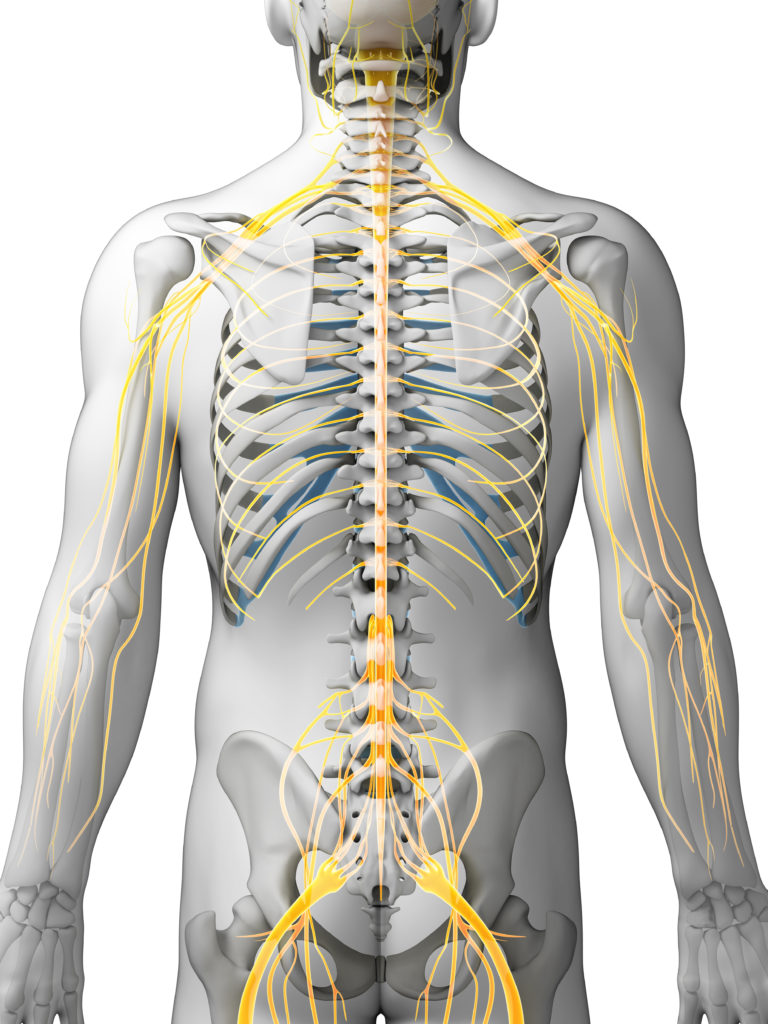Two of the main functions of the spine are to protect and energize the nervous system.
Just as the skull houses and protects the brain, the spine houses and protects the nerve cables that run between the brain and the body.
Proper alignment and movement of the spine are important for balanced brain activity, according to Roger Sperry, Nobel Prize Winner in Brain Research movement of the spine generates 90% of the nerve stimulation used to run the brain. You could say that the movement of the spine is like the windmill of the brain; it recharges the headquarters (brain) that runs the entire body. The increase in mental alertness that you feel when you are doing exercise or when you’ve just been for a brisk walk is to a big extent due to increased brain stimulation from spinal movement.
If some of the bones in your spine has limited or dysfunctional in its movement, then some of your brains power generators are out of function, which will put a cap on the efficiency of your nervous system. It is sort of like having an understaffed headquarters in a company; the organization can never reach its full potential without clear leadership and communication from the headquarters. Likewise, your body can never reach its full potential without clear leadership and communication from the nervous system.
A distorted, locked-up spine also means that the protective housing for the spinal cord and nerves are structurally unsound and potentially could pinch and strangulate these communication pathways between the brain and body.
A chiropractors job is to service your spine by keeping it better aligned and moving more freely. With good spinal motion and position, your body has a better chance of having fully recharged brainpower and for the messages in the nerve, cables to reach their final destination. This essentially giving your body a chance to run and flourish the way it was designed to.

